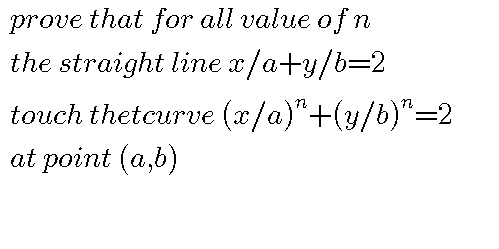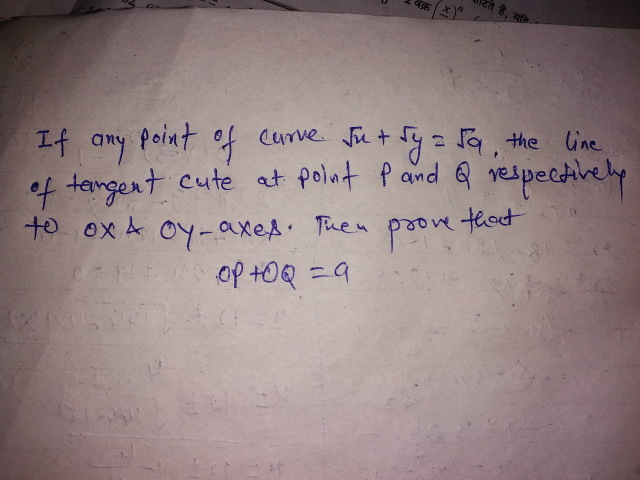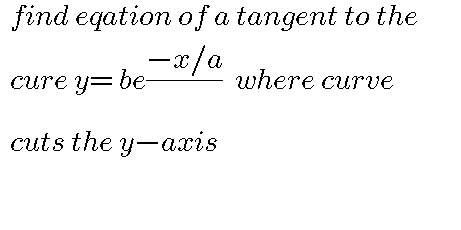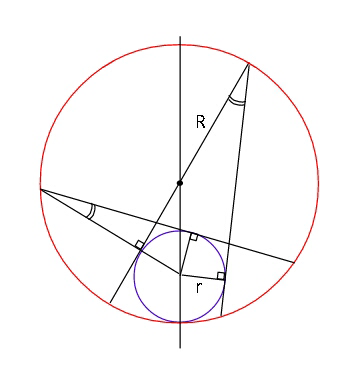
Question and Answers Forum
AllQuestion and Answers: Page 1634










Pg 1629 Pg 1630 Pg 1631 Pg 1632 Pg 1633 Pg 1634 Pg 1635 Pg 1636 Pg 1637 Pg 1638
|
Question and Answers Forum |
AllQuestion and Answers: Page 1634 |

|

|

|

|
| Domain of the explicit form of the function y represented implicitly by the equation (1+x)cosy−x^2 =0 is (a) (−1,1] (b) (−1, 1−(√)5/2] (c) [1−(√)5/2, 1+(√)5/2] (d) [0, 1+(√)5/2] |
| find the greatest possible square insribed in a triangle with sides a b c |

|
| lim_(n→∞) [ (1/(n^2 +1))+ (2/(n^2 +2))+ (3/(n^2 +3))+ ....+(1/(n+1))] = ? |
| ∫_(1/4) ^( 4) (1/x) sin (x−(1/x))dx = ? |
| f(x)= ∫_0 ^( x_ ) e^(t ) (((1+sin t)/(1+cos t))) dt. Then f((π/3))×f(((2π)/3)) = ? |

|
| ∫2^x 3^(2x) dx=? |
| ∫_0 ^(2π) e^(x/2) sin ((x/2)+(π/4))dx = ? |

|
| find f(t)= ∫_0 ^1 ((ln(1+xt))/(1+x^2 )) dx . |
| Given that θ is an obtuse angle find tan θ if cos θ =(3/5) |
| calculate F(x) = ∫_0 ^∞ (dt/(1+(1+x(1+t^2 ))^2 )) |
| calculate A =tan((π/5)).tan(((2π)/5)).tan(((3π)/5)).tan(((4π)/5)) |
| find the value of ∫_0 ^1 ((ln(1+x))/(1+x^2 ))dx |
| The values of a for which y= ax^2 +ax+(1/(24)) and x = ay^2 +ay+(1/(24)) touch each other are 1) (2/3) 2) (3/2) 3) ((13+(√(601)))/(12)) 4) ((13−(√(601)))/(12)). |
| calculate ∫_0 ^(π/3) ((sinxdx)/(cosx(2+ln(cosx))) . |

|

|
| find the value of Σ_(n=0) ^∞ (((−1)^n )/(4n+1)) |

|
| study the derivability of f(x)=Σ_(n=0) ^∞ (((−1)^n )/(nx +1)) |
Pg 1629 Pg 1630 Pg 1631 Pg 1632 Pg 1633 Pg 1634 Pg 1635 Pg 1636 Pg 1637 Pg 1638 |